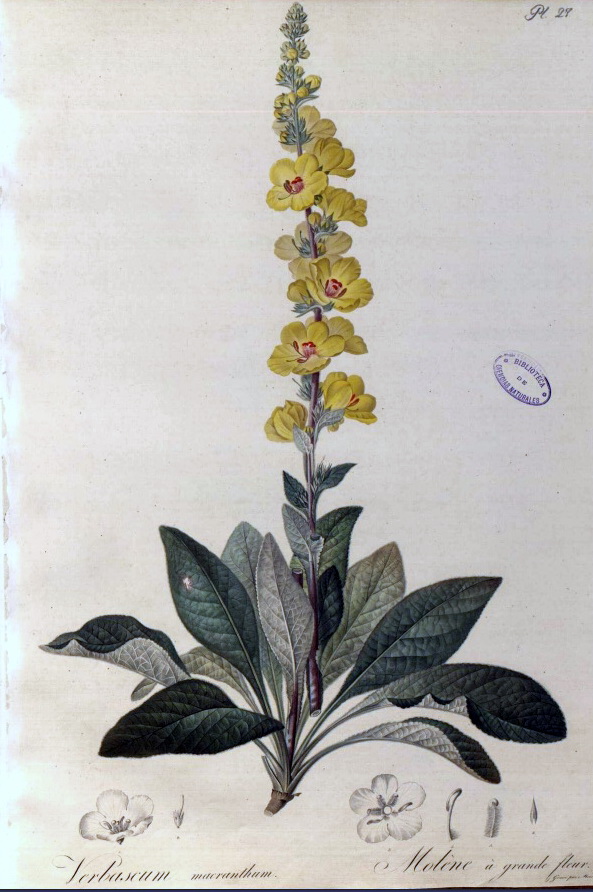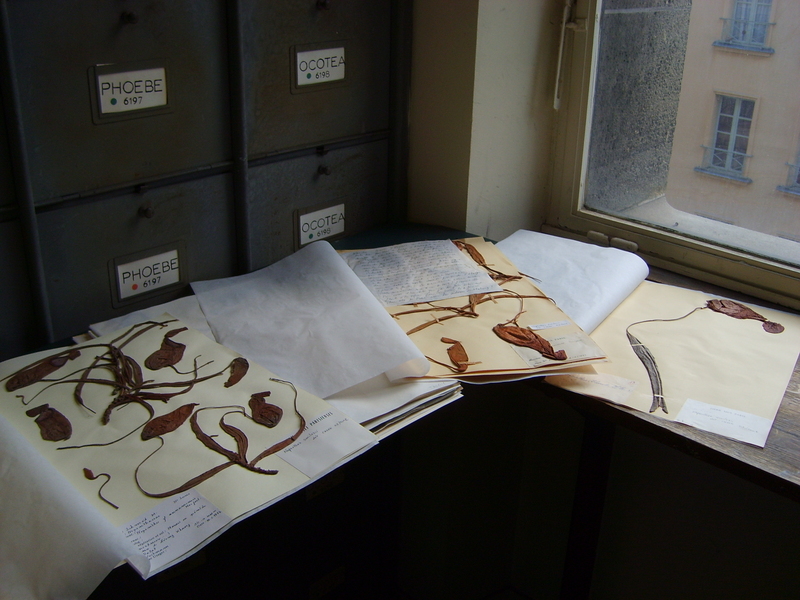|
Franz Sieber
Franz Wilhelm Sieber (30 March 1789 – 17 December 1844) was a botanist and collector who travelled to Europe, the Middle East, Southern Africa and Australia. Early life Franz Sieber was born in Prague, Bohemia, on 30 March 1789. After five years of study at the Gymnasium, endowed with a considerable talent for the graphic arts, he studied architecture, switched to engineering and finally settled on natural history, in particular botany. Expeditions He made several collecting trips to Italy, Crete, Greece, Egypt and Palestine followed by a two-year-long expedition to Australia, Mauritius and South Africa, collecting not only plants, but also animals, art and ethnographic objects. He spent seven months in Sydney (then more usually called Port Jackson) from 1 June 1823 until December 1823 where he collected 645 local plant specimens. He never reached the Western hemisphere (in contradistinction to Friedrich Wilhelm Sieber, an employee of Johann Centurius Hoffmannsegg), but se ... [...More Info...] [...Related Items...] OR: [Wikipedia] [Google] [Baidu] |
Prague
Prague ( ; ) is the capital and List of cities and towns in the Czech Republic, largest city of the Czech Republic and the historical capital of Bohemia. Prague, located on the Vltava River, has a population of about 1.4 million, while its Prague metropolitan area, metropolitan area is home to approximately 2.3 million people. Prague is a historical city with Romanesque architecture, Romanesque, Czech Gothic architecture, Gothic, Czech Renaissance architecture, Renaissance and Czech Baroque architecture, Baroque architecture. It was the capital of the Kingdom of Bohemia and residence of several Holy Roman Emperors, most notably Charles IV, Holy Roman Emperor, Charles IV (r. 1346–1378) and Rudolf II, Holy Roman Emperor, Rudolf II (r. 1575–1611). It was an important city to the Habsburg monarchy and Austria-Hungary. The city played major roles in the Bohemian Reformation, Bohemian and the Protestant Reformations, the Thirty Years' War and in 20th-century history a ... [...More Info...] [...Related Items...] OR: [Wikipedia] [Google] [Baidu] |
Johann Centurius Hoffmannsegg
Johann Centurius Hoffmann Graf von Hoffmannsegg (23 August 1766 – 13 December 1849) was a German botanist, entomologist and ornithologist. Hoffmannsegg was born at Rammenau and studied at Leipzig and Göttingen. He travelled through Europe acquiring vast collections of plants and animals. He visited Hungary, Austria and Italy in 1795–1796 and Portugal from 1797 to 1801. He sent his collections to Johann Karl Wilhelm Illiger, then in Braunschweig, Brunswick, so that he could study them. Hoffmannsegg worked in Berlin from 1804 to 1816, and was elected a member of the Academy of sciences, Academy of Science of the city in 1815. He was the founder of the zoological museum of Berlin in 1809. Hoffmannsegg proposed Illiger for the position of curator, and all the Hoffmannsegg's collections were then transferred to Berlin. The legume genus ''Hoffmannseggia'' is named for him. Notes References 1766 births 1849 deaths Burials at Old Catholic Cemetery, Dresden People ... [...More Info...] [...Related Items...] OR: [Wikipedia] [Google] [Baidu] |
Allium
''Allium'' is a large genus of monocotyledonous flowering plants with around 1000 accepted species, making ''Allium'' the largest genus in the family Amaryllidaceae and among the largest plant genera in the world. Many of the species are edible, and some have a long history of cultivation and human consumption as a vegetable including the onion, garlic, scallion, scallions, shallot, shallots, leek, leeks, and chives, with onions being the second most grown vegetable globally after tomatoes as of 2023. ''Allium'' species occur in temperate climates of the Northern Hemisphere, except for a few species occurring in Chile (such as ''A. juncifolium''), Brazil (''A. sellovianum''), and tropical Africa (Allium spathaceum, ''A. spathaceum''). They vary in height between . The flowers form an umbel at the top of a leafless stalk. The bulbs vary in size between species, from small (around 2–3 mm in diameter) to rather large (8–10 cm). Some species (such as Wels ... [...More Info...] [...Related Items...] OR: [Wikipedia] [Google] [Baidu] |
Pleurothallis
''Pleurothallis'' is a genus of orchids commonly called bonnet orchids. The genus name is derived from the Greek word , meaning "riblike branches". This refers to the rib-like stems of many species. The genus is often abbreviated as "Pths" in horticultural trade. This was a huge genus, which contained more than 1,200 species - the second largest in the Orchidaceae after ''Bulbophyllum''. In 2004, it decreased by more than half when many species were moved into new genera. Distribution ''Pleurothallis'' is a completely New World group, widespread across much of Mexico, Central America, South America and the West Indies. Flora of North America lists one species in Florida ''(P. gelida)'' but this has now been transferred to a different genus, ''Stelis''. The center of diversity of the genus is in the high Andes, especially in the chain of cloud forests in Colombia. ''Pleurothallis'' grows in dry or wet, tropical or temperate climates. Description As a group they show a huge range ... [...More Info...] [...Related Items...] OR: [Wikipedia] [Google] [Baidu] |
Acacia Sieberiana
''Vachellia sieberiana'', until recently known as ''Acacia sieberiana'', is a tree native to southern Africa and introduced into Pakistan. It is used in many areas for various purposes. The tree varies from 3 to 25 m in height, with a trunk diameter of 0.6 to 1.8 m.World Agroforestry Centre It is not listed as being a . Varieties * ''Vachellia sieberiana'' var. ''sieberiana'' – longpod thorn, false paperbark thorn * ''Vachellia sieberiana'' var. ''villosa'' (A.Chev.) Kyal. & Boatwr. * ''Vachellia sieberiana'' var. ''woodii'' (Burtt Davy ...[...More Info...] [...Related Items...] OR: [Wikipedia] [Google] [Baidu] |
Asteraceae
Asteraceae () is a large family (biology), family of flowering plants that consists of over 32,000 known species in over 1,900 genera within the Order (biology), order Asterales. The number of species in Asteraceae is rivaled only by the Orchidaceae, and which is the larger family is unclear as the quantity of Extant taxon, extant species in each family is unknown. The Asteraceae were first described in the year 1740 and given the original name Composita, Compositae. The family is commonly known as the aster, Daisy (flower), daisy, composite, or sunflower family. Most species of Asteraceae are herbaceous plants, and may be Annual plant, annual, Biennial plant, biennial, or Perennial plant, perennial, but there are also shrubs, vines, and trees. The family has a widespread distribution, from subpolar to tropical regions, in a wide variety of habitats. Most occur in Hot desert climate, hot desert and cold or hot Semi-arid climate, semi-desert climates, and they are found on ever ... [...More Info...] [...Related Items...] OR: [Wikipedia] [Google] [Baidu] |
Siebera
''Siebera'' is a genus of flowering plants in the tribe Cardueae in the family Asteraceae, native to Western Asia. ; SpeciesFlann, C (ed) 2009+ Global Compositae Checklist /ref> * '' Siebera nana'' (DC.) Bornm. - , |
Rabies
Rabies is a viral disease that causes encephalitis in humans and other mammals. It was historically referred to as hydrophobia ("fear of water") because its victims panic when offered liquids to drink. Early symptoms can include fever and abnormal sensations at the site of exposure. These symptoms are followed by one or more of the following symptoms: nausea, vomiting, violent movements, uncontrolled excitement, fear of water, an inability to move parts of the body, confusion, and loss of consciousness. Once symptoms appear, the result is virtually always death. The time period between contracting the disease and the start of symptoms is usually one to three months but can vary from less than one week to more than one year. The time depends on the distance the virus must travel along Peripheral nervous system, peripheral nerves to reach the central nervous system. Rabies is caused by lyssaviruses, including the rabies virus and Australian bat lyssavirus. It is spread when an i ... [...More Info...] [...Related Items...] OR: [Wikipedia] [Google] [Baidu] |
Exsiccata
Exsiccata (Latin, ''gen.'' -ae, ''plur.'' -ae) is a work with "published, uniform, numbered set[s] of preserved specimens distributed with printed labels". Typically, exsiccatae are numbered collections of dried herbarium Biological specimen, specimens or preserved biological sample (material), samples published in several duplicate sets with a common theme or title, such as ''Lichenes Helvetici exsiccati'' (see figure). Exsiccatae are regarded as scientific contributions of the editor(s) with characteristics from the library world (published booklets of scientific literature, with authors/ editing, editors, titles, often published in Serial (publishing), serial publications like journals and magazines and in Serial_(literature), serial formats with fascicles) and features from the herbarium world (uniform and numbered collections of duplicate herbarium specimens). Exsiccatae works represent a special method of scholarly communication. The text in the printed matters/published book ... [...More Info...] [...Related Items...] OR: [Wikipedia] [Google] [Baidu] |
Herbarium
A herbarium (plural: herbaria) is a collection of preserved plant biological specimen, specimens and associated data used for scientific study. The specimens may be whole plants or plant parts; these will usually be in dried form mounted on a sheet of paper (called ''exsiccatum'', plur. ''exsiccata'') but, depending upon the material, may also be stored in boxes or kept in alcohol or other preservative. The specimens in a herbarium are often used as reference material in describing plant taxon, taxa. Some specimens may be Type (botany), types, some may be specimens distributed in published series called exsiccata, exsiccatae. The term herbarium is often used in mycology to describe an equivalent collection of preserved fungi, otherwise known as a fungarium. A xylarium is a herbarium specialising in specimens of wood. The term hortorium (as in the Liberty Hyde Bailey, Liberty Hyde Bailey Hortorium) has occasionally been applied to a herbarium specialising in preserving material of ... [...More Info...] [...Related Items...] OR: [Wikipedia] [Google] [Baidu] |
Karl Ludwig Philipp Zeyher
Karl Ludwig Philipp Zeyher (2 August 1799 Dillenburg, Hessen, Holy Roman Empire – 13 December 1858 Cape Town), was a botanical and insect collector who collected extensively in Cape Colony. He was the author, with Christian Friedrich Ecklon, of ''Enumeratio Plantarum Africae Australis'' (1835-7), a descriptive catalogue of South African plants. In 1816 Zeyher was apprenticed to his uncle Johann Michael Zeyher who was head gardener at the ducal gardens of Schwetzingen. Here he met Franz Sieber and was talked into a partnership with the aim of collecting and selling natural history specimens - a burgeoning industry in the 19th century. They sailed for Mauritius in August 1822, however Zeyher was left at the Cape while Sieber went on to Mauritius and Australia. On his return in April 1824, Sieber picked up the specimens collected by Zeyher, assuring him of payment in due course. Sieber distributed a number of these specimens in his exsiccata named ''Flora Capensis''. No payment ... [...More Info...] [...Related Items...] OR: [Wikipedia] [Google] [Baidu] |
Carl Hilsenberg
Carl (or Karl) Theodor Hilsenberg (11 March 1802 – 11 September 1824) was a German naturalist, botanist and ornithologist, who collected plants in Madagascar and Mauritius. The expedition in Mauritius resulted in the publication of an exsiccata-like series issued by Franz Sieber with the title ''Flora Mauritiana''. He described the sooty albatross The sooty albatross (''Phoebetria fusca''), also known to sailors as the Quaker, is a species of marine bird belonging to the albatross family Diomedeidae. It is a medium-sized albatross that sports a sooty-brown or sooty-black color. It can b ... in 1822. References 1802 births 1824 deaths 19th-century German botanists German ornithologists {{ornithologist-stub ... [...More Info...] [...Related Items...] OR: [Wikipedia] [Google] [Baidu] |




